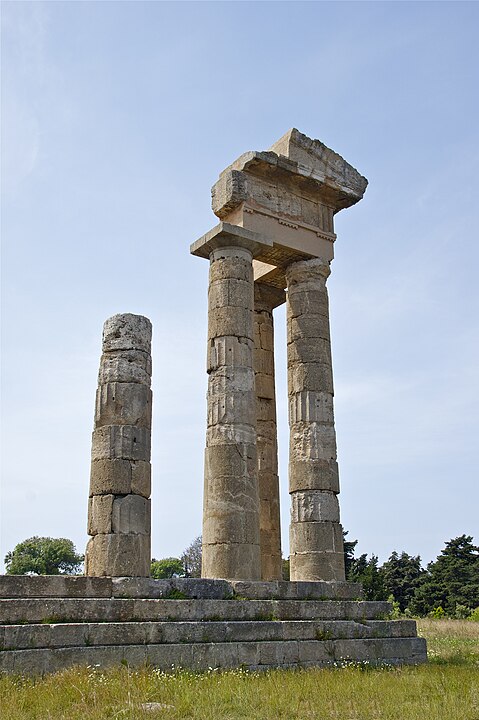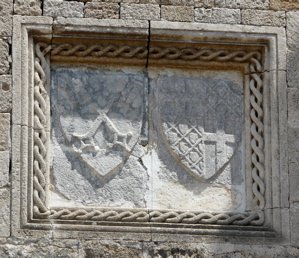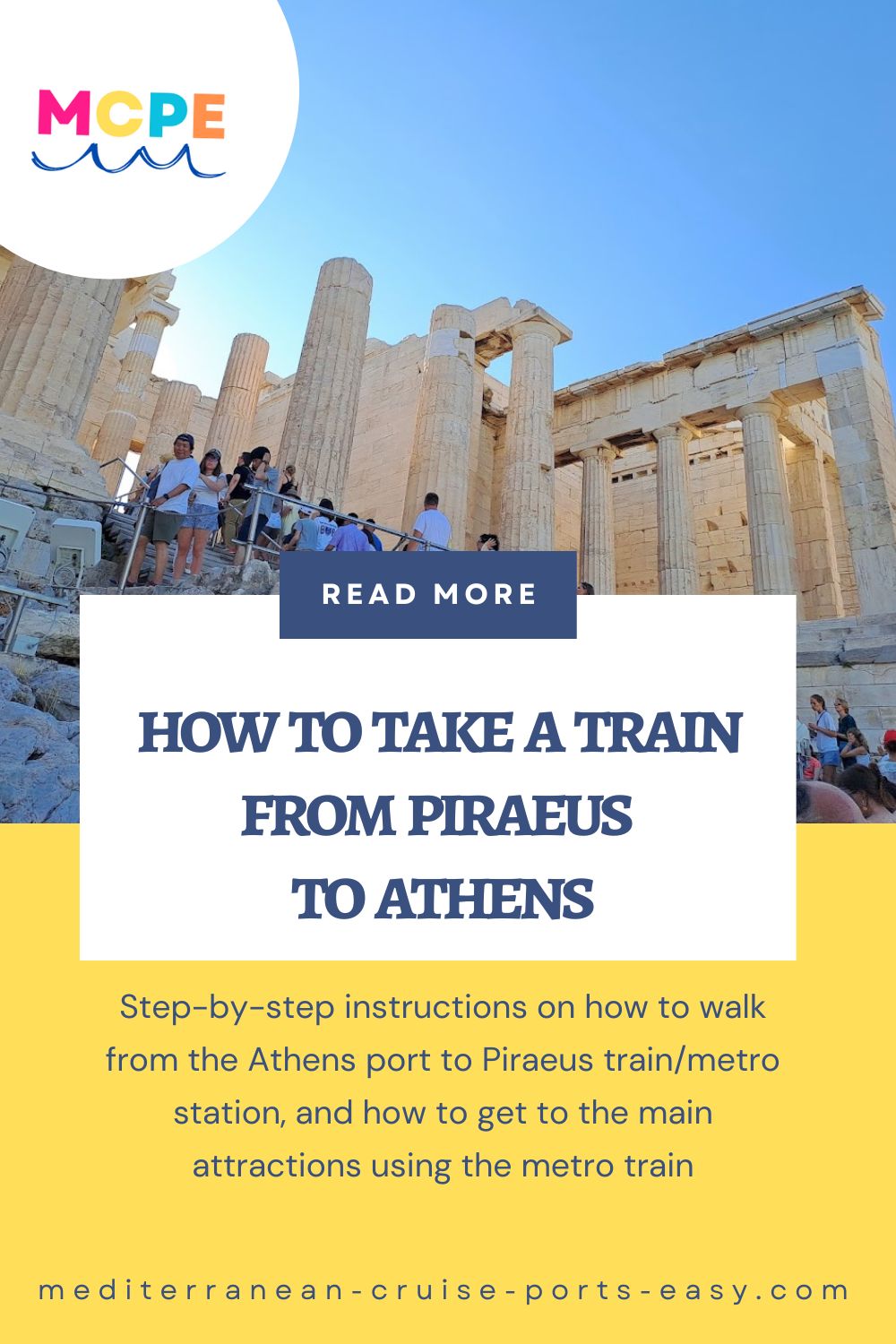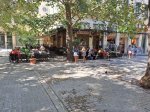Ancient Rhodes - History of Rhodes Greece
Ancient Rhodes - in 5 minutes of reading this Rhodes Greece history guide will put things into perspective before your Mediterranean cruise.
What happened in ancient Rhodes in prehistory?
Although some finds indicate that Ancient Rhodes has been inhabited since prehistoric times, there are not enough artifacts found for us to make any conclusions about that part of Rhodes's history.
The first settlers we know more about were the Minoan Cretans (around the 16th Century BC) who established trading stations on the island.
The next chapter of Rhodes history is when the Mycenaeans came (around the 15th Century BC), who contrary to the Cretans, did not stay on the coastlines, but advanced more inland and fortified hills where they built their settlements.
They were so prosperous that even the neighbouring peoples referred to them in their writings.
Pottery and jewelry from the tombs of this period of ancient Rhodes history can be seen today in the Rhodes archaeological museum.
As in the rest of Greece, the Dorians arrived around the 10th Century BC.
With the Doric colonization there was a lot of progress and development on ancient Rhodes. The Dorians brought their dialect, political organization, customs and traditions to both Rhodes and the rest of Greece.
The island was divided into 3 sections with each one having a main city. Those cities were:
- Ialysos
- Lindos
- Kameiros
| DINING-ROOM TABLE TIDBIT: These three cities were mentioned by Homer in his Iliad, as they took part in the Trojan War by sending 9 ships. |
The cities of Ialysos, Lindos, and Kameiros (and Rhodos island in general) became wealthy commercial centers of their time, so much so that these 3 Rhodes cities minted their coins.
At this time, Rhodes was a great commercial center and thanks to its advantageous geographical position, it served as a staging post and a safe anchorage on the way to other markets all around the Mediterranean.
Economic prosperity was followed in the arts as well. Ceramics was one of the most common artifacts of the time, and typical Rhodian ceramic vessels are still discovered on all Mediterranean shores.
Another chapter in the history of Rhodes started with the Persian invasion. They captured the island before 480 BC. The Rhodians were made to fight for them against other Greeks but this did not last long, as the Persians were defeated by Athenian troops in 478 BC. Rhodes then joined the Athenian League.
When Athens went to war against Sparta in 431 BC, there are two accounts to the story:
1. the Rhodians switched sides and decided to support the Spartans.
2. they stayed a member of the Athenian League but remained neutral all through the Peloponnesian War.
Want to find out more about Rhodes and its history? Here are some of the most loved walking tours:
What was happening in ancient Rhodes in Classical times?
In 408 BC, Rhodes’ 3 main cities eventually came together to found a new city on the northern tip of the island – which is today's city of Rhodes.
The new city was built based on the ideals of ancient Greek architect and urban planner Hippodamus – the town had straight roads which crossed each other at right angles.
Today, some of the modern roads still coincide with those of the old Rhodes roads.
Ancient Rhodes town had a harbor zone with shipyards, a commercial zone, the acropolis and a residential zone.
It had all the usual features of a Greek city of those times: public buildings, temples, theaters… and it was adorned with many works of art.
At the time, Rhodes was so beautiful it was considered to be the most beautiful city in the world.
It was protected by a 16 km long wall which encompassed 70,000 sq meters.
By the 3rd Century BC, the town had almost 80 000 inhabitants which is almost the population of the whole island today!
The ancient Rhodes Acropolis was much unlike the rest of the Greek Acropolises at the same time as it wasn’t fortified. It dominated the Western and highest part of the city and its buildings were built on stepped terraces supported by walls.
In the past the Rhodes Acropolis had sanctuaries, huge temple premises, public buildings, and underground cult places… but its whole Acropolis is yet to be excavated.
What can be seen today are the remains of:
- Temple of Athena Polias and Zeus Polias - this was where the Rhodians kept the texts of their treaties with other states
- Nymphaia - an ancient place for worship and recreation. It consists of four subterranean cave-like constructions cut into the rock with entrance steps
- Odeion - (theatre) seating up to 800 spectators, for musical performances and classes in rhetoric
- Temple of Pythian Apollo
- Stoa building - which consisted of covered walkways or porticos for public use. Here merchants could sell their goods, artists could display their artwork, and religious gatherings could take place
- Artemision - place for worship of Artemis
- Stadium – an outdoor place where games and sports are held
- Gymnasium – training facility for competitors in public games
- Library
Remains of the ancient Rhodes Temple of Aphrodite can be seen excavated close to the Eleftherias (Freedom) gate, on the edge of the old town of Rhodes.
Most of the buildings on the ancient Rhodes Acropolis date back to the Hellenistic and Late Hellenistic periods (3rd and 2nd Centuries BC).
Ancient Rhodes experienced a Golden Age in the 3rd Century BC and boasted many a famous artist, writer, and philosopher.
In 357 BC, the island was conquered by the king of Caria in Western Anatolia (today’s Turkey), then captured by the Persians again in 340 BC. Their reign did not last very long as they were defeated again by Alexander the Great in 332 BC, making Rhodes part of his empire.
Read more about the history of the ancient Rhodes on Brittanica.
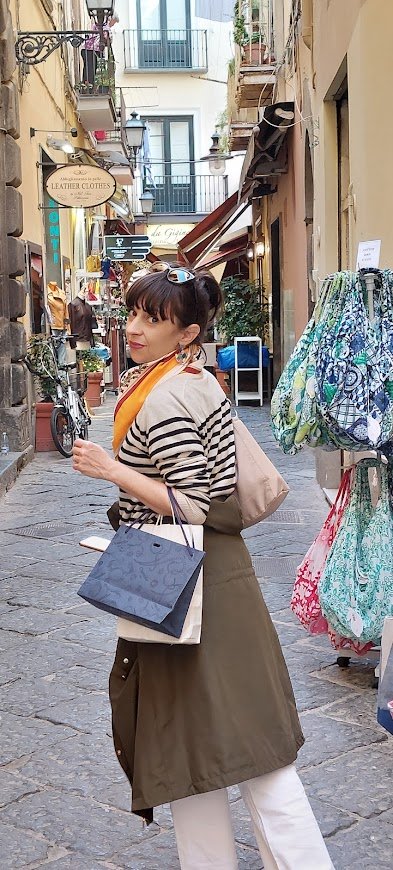
With over seven years working aboard cruise ships as a port guide and shopper assistant, I’ve helped thousands of passengers get the best from their days ashore in Dubrovnik. Now, I want to make you Med confident!
TAKE A SHORTCUT TO TOP 30 MOST VIEWED PAGES OF 2025:
4. Capri ferry
10. Livorno Italy
13. Naples to Capri
16. Messina Sicily
17. Pisa Train
18. Visiting Pompeii
19. Pompeii forum
20. Port of Piraeus
22. Venice vaporetto
23. Venice water bus
24. Livorno map
25. Getting to Zadar
27. Walk Venice
28. Mykonos beach
29. Lucca Italy
30. Pomepii homes
